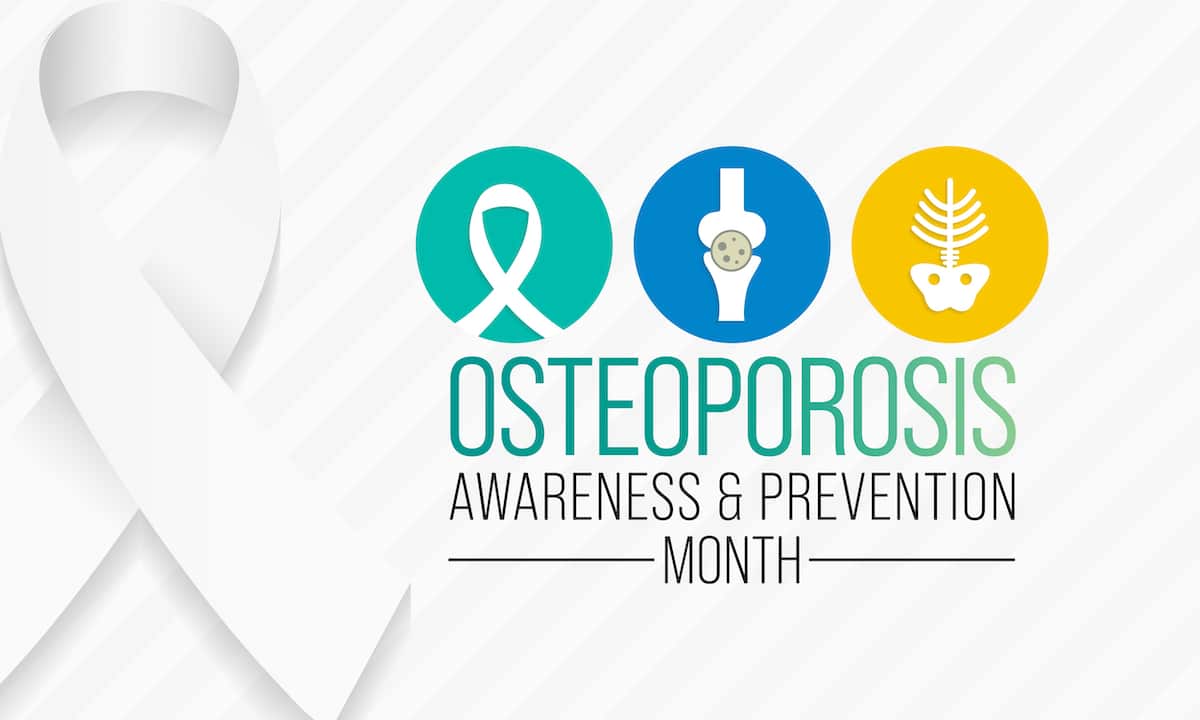Search by Color or Cause


National Osteoporosis Awareness and Prevention Month is celebrated in May. It is sponsored by the National Osteoporosis Foundation. The intention of osteoporosis awareness is to promote good bone health through the prevention, detection, and treatment of osteoporosis. National Osteoporosis Month encourages people to understand the risk factors associated with osteoporosis. Preventative measures which promote healthy bones include sufficient calcium intake, achieving adequate levels of vitamin D, and performing bone healthy exercises.
National Osteoporosis Awareness and Prevention Month recognizes that osteoporosis is a condition characterized by low bone density. People with low bone density stand a greater chance of fracturing their bones. The elderly and frail are at greater risk from falls which can lead to bone fracture. Wear a white pin for National Osteoporosis Awareness and Prevention Month. Personalized Cause offers white enamel awareness ribbon pins for the lapel, fabric ribbons, and white silicone awareness wristband bracelets.
Osteoporosis is a disease that affects approximately 10 million Americans, while another 44 million suffer from low bone density, placing them at a higher risk of bone fractures. Unfortunately, many people do not realize that focusing on bone health during childhood is crucial as it sets the foundation for strong and healthy bones in adulthood. Therefore, it is important to adopt healthy habits early on to help prevent future bone-related health issues. For this reason, we wear a white ribbon to support National Osteoporosis Awareness and Prevention Month.
Osteoporosis is a bone disease that occurs when the body loses too much bone, makes too little bone, or both. As a result, bones become weak and may break from a fall or, in serious cases, from sneezing or minor bumps.
Osteoporosis means “porous bone.” Viewed under a microscope, healthy bone looks like a honeycomb. When osteoporosis occurs, the holes and spaces in the honeycomb are much larger than in healthy bone. Osteoporotic bones have lost density or mass, and contain abnormal tissue structure. As bones become less dense, they weaken and are more likely to break. If you’re 50 or older and have broken a bone, ask your doctor or healthcare provider about a bone density test.
About 54 million Americans have osteoporosis and low bone mass, placing them at increased risk for osteoporosis. Studies suggest that approximately one in two women and up to one in four men age 50 and older will break a bone due to osteoporosis.
Breaking a bone is a serious complication of osteoporosis, especially with older patients. Osteoporotic bone breaks are most likely to occur in the hip, spine or wrist, but other bones can break, too. In addition to causing permanent pain, osteoporosis causes some patients to lose height. When osteoporosis affects vertebrae, or the bones of the spine, it often leads to a stooped or hunched posture.
Osteoporosis may limit mobility, which often leads to feelings of isolation or depression. Additionally, twenty percent of seniors who break a hip die within one year from either complications related to the broken bone itself or the surgery to repair it. Many patients require long-term nursing home care.
Osteoporosis is responsible for two million broken bones and $19 billion in related costs every year. By 2025, experts predict that osteoporosis will be responsible for approximately three million fractures and $25.3 billion in costs annually.
Osteoporosis is often called a silent disease because one can’t feel bones weakening. Breaking a bone is often the first sign of osteoporosis or a patient may notice that he or she is getting shorter or their upper back is curving forward. If you are experiencing height loss or your spine is curving, consult your doctor or healthcare professional.
Resources are available to help individuals learn more about osteoporosis and how to maintain strong and healthy bones. This includes information on bone-healthy foods, exercise, bone density testing, medications for treatment of osteoporosis, tips for preventing falls, and much more. A new digital tool, Your Path to Good Bone Health, provides patients and care partners with the information they need to take control of their bone health, manage their osteoporosis, and prevent debilitating fractures.
Throughout the month of May, there are also a variety of events to promote bone health awareness. These events include educational webinars, interactive presentations, new podcast episodes, and fitness classes.